Your guide to the best cuts of lamb
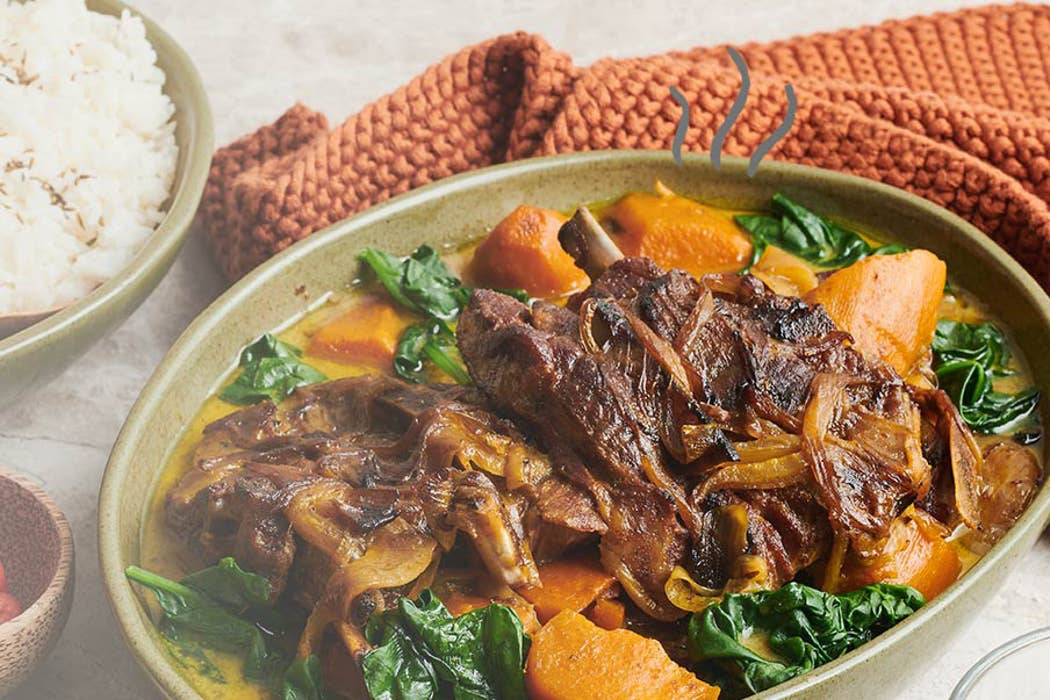
New Zealand lamb is recognised as some of the best in the world. Sustainably and ethically reared on our native green pastures, grass-fed NZ lamb is naturally lean and packed with flavour.
Below, we’ll explore the different cuts of lamb, how to cook them, and some of our favourite lamb recipes.
Lamb mince
It’s no secret that kids love mince, so it tends to be a staple in most Kiwi households. Often when we think of mince, we’re thinking about beef mince specifically — but lamb mince is a great, flavourful and lean alternative.
Lamb mince can be used as a direct substitute for beef mince in any recipe, but it also has a few unique uses of its own. Its grassy flavour profile means it belongs perfectly in Mediterranean cuisines.
Use lamb mince in koftas, moussaka, flatbread pizzas, or spicy harissa sausage rolls.
Whole lamb joints
If there’s one superior way to eat lamb, it’s as a roast. A whole leg or rump roast can make an incredible centrepiece at any dinner party — or just as a hearty Sunday dinner. Also from the hindquarter, rump and shanks are very desirable lamb cuts.
 | Leg of lambA lamb leg roast is a hero at the dinner table any time of the year. Pair it with fresh spring peas or vibrant mint sauce, or slow cook it in a rich wintery tomato sauce. As the name suggests, the leg of lamb is cut from the rear thighs of the sheep. As a medium-tender cut, it benefits from slow roasting or slow cooking. It can be roasted on the BBQ or in a 180° C oven for 30 minutes per 500g. A whole leg can also be slow cooked in a sauce for 5-6 hours to allow the meat to become especially tender and shreddable — perfect for a ragu. Leg of lamb recipesClassic Roast Lamb - This classic roast lamb recipe features a fantastic rub, as well as roast veggies, mint sauce and sides by Anika Moa and Toni Street. Leg of Lamb with Cranberry Mint Glaze - For a festive twist on a classic lamb roast, try this cranberry mint glaze. |
 | Butterflied lamb legButterflied lamb leg is the same cut as a leg of lamb, however the bone has been removed and trimmed so the meat lies flat. You might choose butterflied lamb leg over a whole leg of lamb due to its faster and more even cooking. Being thinner, with an overall more even thickness, butterflied lamb leg cooks quickly on the barbecue or even in a large pan. A 2kg butterflied lamb leg can be seared on a hot barbecue for 5 minutes on each side, then left to cook through for 15-20 minutes over a low heat. Butterflied lamb leg recipesGreek-style Lamb Salad - Barbecue a butterflied lamb leg, then thinly slice and serve with this zesty and bright Greek salad. |
 | Lamb rump roastLamb rump is sometimes considered a chef’s cut, because it can be small enough that a chef might present a whole roasting joint for only a few guests. The rump comes from the back of the sheep, above the rear legs and tail. It has a thick layer of fat over the top edge, which imparts plenty of rich flavour and crisps beautifully when cooked, though some prefer to trim this off. To cook lamb rump, sear the rump all over in a frying pan. If the fat is still attached, place the lamb fat-side down first and let it side to render down the fat before turning. Once seared all over, transfer to a 200° C oven and cook for just 15 minutes. Rest for at least 5 minutes before serving. |
 | Lamb shanksLamb shanks are wildly popular, but many may be hesitant to cook them for themselves. These are cut from working muscles and must be cooked low, slow and with plenty of moisture to become falling-off-the-bone tender. Shanks are taken from the smaller end of a leg roast — just above the knee joint and below the leg. They can be cut from both the front or rear legs, which can change the shape, however both can be used interchangeably. Shanks are almost exclusively slow cooked in liquid, either in the oven or in a slow cooker. Lamb shanks recipesBaked Lamb Shanks - Slow cook your lamb shanks in a sauce of red wine, herbs and veggies for two and a half hours for wondrously tender results. |
 | Lamb shoulderA lamb shoulder, also called a forequarter, is cut from the top of the sheep’s front legs. It is sometimes sold as a boneless roast, or cut into shoulder chops. Shoulder is a less popular cut due to the bones in it making it harder to carve. This means it’s quite affordable, but it’s still full of deliciously marbled meat that’s noticeably sweet. To save the effort of carving meat, the shoulder is best used as a slow cooking cut. Cook low and slow for 3-5 hours until the meat easily falls from the bone. Shred and use for sandwiches, pizza toppings or in a ragu. |
Lamb drums
Lamb drums, or drumsticks, are the same cut as a lamb shank but with a little more work put in by your butcher. Drums have had the end of the shank bone cleaned of excess fat and meat. This reveals the bone, creating visual appeal at the table but also making it even easier for the meat to release.
Cook in the same way you would cook a lamb shank.
Shop fresh lamb at New World
1 / 0
Lamb chops and steaks
Lamb chops are typically bone-in cuts, which can be taken from a number of different parts of the sheep. Because the bone is left in, they’re loaded with flavour. Steaks are much the same as chops, but conveniently do not have any bones and typically cook very quickly.
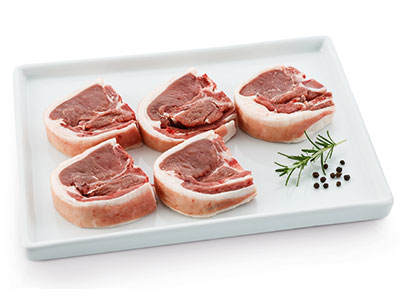 | Loin chopsLamb loin chops are cut from the middle of the lamb, near the spine. They’re sometimes called the “T-bone” of lamb, due to the smaller t-bone that separates the tenderloin and the eye of fillet that make up this tender cut. Because loin chops feature two very tender muscles, they are best cooked quickly over a high heat on the BBQ or in a frying pan. |
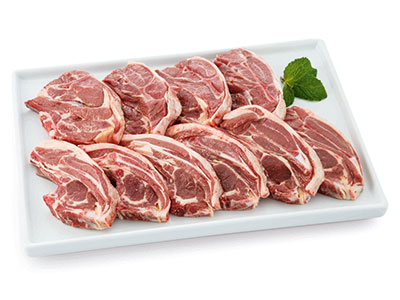 | Shoulder chopsLamb shoulder chops are taken from the forequarter of the sheep — the top of the front leg. This cut may often be overcooked because it has both fat and connective tissue to take into consideration. Despite this, shoulder chops are actually a very versatile cut of lamb, on top of being comparatively affordable. Shoulder chops can be marinated and seared on the barbecue or in a frying pan over a high heat for 2-3 minutes on each side. Alternatively, shoulder chops can be added to any slow cooker recipe where the connective tissue will melt and produce extremely tender meat. You can even roast them! Lamb shoulder chops recipesRoast Lamb Chops - Roast lamb shoulder chops for a good 35 minutes to allow the connective tissue to break down. |
 | Neck chopsDon’t turn your nose up at neck chops. While the idea of meat from the neck may not sound appealing, neck chops are absolutely beautiful when slow cooked in liquid. Not only is the meat flavoursome, it becomes wonderfully delicate and tender. Better still, neck chops are inexpensive and sold in thick slices, so you’re getting plenty of bang for your buck. The bone in these cuts releases plenty of collagen that produces a silky texture in stews or curries. Lamb neck chop recipesSlow Cooked Lamb Korma - Use neck or shoulder chops for this warming lamb korma curry. Learn more: How to slow cook lamb. |
 | Lamb leg steaksLamb leg steaks are prepared from a boneless leg, but may be cut from any section of the leg including the silverside, topside and rump. Steaks are typically flavoursome and tender and should be treated much the same as any beef steak. Sear over a high heat to create a delicious golden crust all over and serve medium-rare, or slice into thin strips for quick stir-frying. |
Lamb rack and ribs
Rack of lamb and lamb ribs are both delicious cuts. Despite both featuring the rib bones, rack of lamb and lamb ribs feature different meat and taste quite unique too.
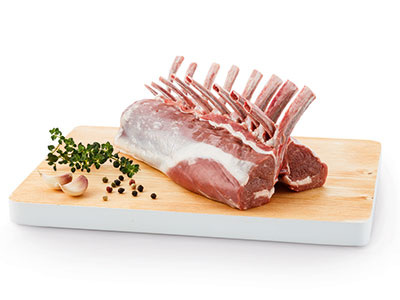 | Rack of lambRack of lamb is perfect for entertaining. Roast a rack whole, and portion it tableside to put on a real show. A Frenched rack has the rib bones trimmed and cleaned of meat, leaving only the meat eye of loin with long, handle-like bones protruding from it. Lamb racks do sometimes have a layer of silver skin over them — a thin pearly white membrane. This is best removed with a small sharp knife prior to cooking, or you can ask your New World butcher to do it for you. Sear your lamb rack all over for a couple of minutes until nicely browned. Then allow it to cool before placing in a hot over for 13-15 minutes. Rest well before serving. |
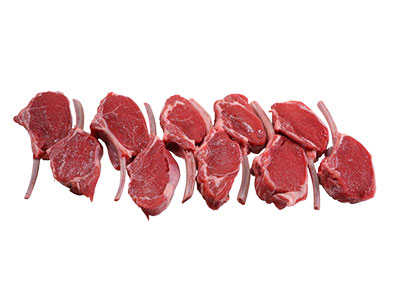 | Lamb cutletsCutlets are the individual portions from a rack of lamb. This is the best way to buy these tender, delicious eye of loin pieces without purchasing a whole joint. You should cook a lamb cutlet in much the same way that you would cook a steak. If a fat cap is still attached, hold the cutlet upright with a pair of tongs to allow the fat to render down before laying the cutlet on its side. Cook for 3 minutes per side for medium-rare. Rest well before serving. |
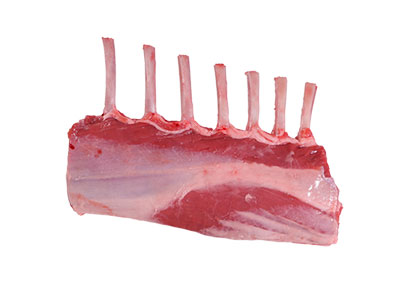 | Lamb ribsWhile a rack of lamb typically has the rib meat cut away, this meat can also be sold with the bones in as lamb ribs. Ribs might be sold as whole pieces, with 3-4 ribs per piece, or cut into individual ribs. Ribs can either be slow roasted for 1-2 hours for tender meat that falls off the bone, or marinated and thrown on the barbecue for 15 minutes to develop a crunchy exterior and tender meat. |
Lamb flap
Lamb flap, or belly, is cut from the chest of the lamb. It usually contains a portion of the rib bones. Flaps are tough and need long, slow cooking. Because flaps are thin and flexible, they can easily be deboned, stuffed and rolled to create a delicious slow roast.
Hungry for more?
Discover more tips and tricks from your New World butchery, or shop from our great range of fresh NZ lamb cuts or prepackaged lamb.











